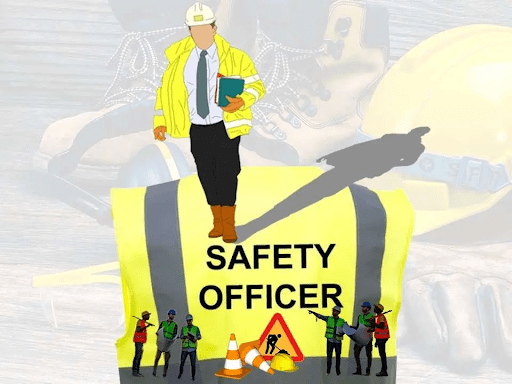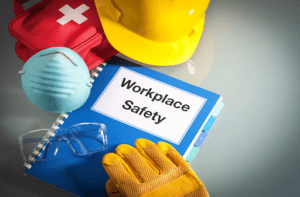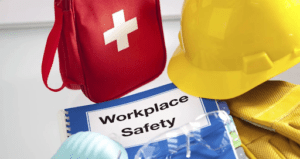Safety Officer: Effective Techniques for Identifying Hazards


Table of Contents
In the realm of workplace safety, the role of a safety officer is indispensable. These professionals, through their rigorous safety officer course training, are equipped with the knowledge and skills necessary to identify potential hazards that could compromise the safety and well-being of employees and the organization at large. This blog delves into the effective techniques utilized by officers, including those specializing in fire safety officers, to pinpoint risks and implement preventive measures. We will also explore the core fire officer responsibilities that play a critical role in maintaining a safe working environment.
The Crucial Role of Safety Officer
Officers acts as the guardians of workplace safety, dedicating their expertise to prevent accidents, injuries, and fatalities. By undertaking a comprehensive course, these individuals are trained to recognize, evaluate, and control a wide array of hazards, ensuring the organization adheres to safety standards and regulations. Their proactive approach to hazard identification and mitigation is vital in fostering a culture of safety and compliance.
Techniques for Identifying Hazards
1. Risk Assessment:
A fundamental technique taught in every officer course involves conducting thorough risk assessments. This systematic process enables officers to identify potential hazards, assess the risks associated with them, and determine appropriate control measures. By evaluating the likelihood and severity of hazards, officers can prioritize safety efforts effectively.
2. Safety Audits:
Regular safety audits are crucial for continuous hazard identification. Officers, including those specializing as fire safety officers, inspect the workplace for compliance with safety regulations and standards. These audits help in identifying new or overlooked hazards, ensuring that all aspects of workplace safety are addressed.
3. Incident Investigation:
Investigating incidents, including near-misses, provides invaluable insights into existing and potential hazards. Officers analyze these incidents to understand their root causes and implement corrective actions to prevent future occurrences. This technique is pivotal in refining safety protocols and enhancing overall safety.
4. Employee Feedback and Participation:
Engaging employees in safety discussions encourages them to report hazards and share their safety concerns. Officers facilitate this communication through safety meetings and suggestion systems, leveraging the firsthand experience of employees to identify hazards that might not be immediately obvious.
5. Hazard Observation Tours:
Conducting regular walkthroughs of the workplace enables officers to visually inspect for hazards. These tours, guided by the knowledge acquired from the safety officer course, allow for the immediate recognition of unsafe conditions and practices, ranging from potential fire hazards to ergonomic risks.
6. Review of Safety Information:
Analyzing safety data, including injury reports, health surveillance, and inspection records, aids officers in identifying trends and patterns that signify potential hazards. This information, coupled with the expertise of fire safety officers, is critical in addressing fire-related and other hazards.
Fire Officer Responsibilities
Fire safety officers carry specific responsibilities that are crucial in preventing fire-related incidents. These include conducting fire risk assessments, ensuring fire safety equipment’s availability and proper maintenance, training employees on fire safety procedures, and developing emergency evacuation plans. Their specialized training empowers them to identify fire hazards and enforce fire safety standards, protecting both life and property.
Continuing from the importance of comprehensive hazard identification and mitigation strategies, it’s crucial to emphasize the ongoing education and training that officers, including fire safety officers, must pursue to stay abreast of the latest safety standards, technologies, and methodologies. This commitment to continuous learning is not only a cornerstone of their professional development but also a critical factor in enhancing workplace safety. Advanced training programs and safety officer courses offer insights into emerging hazards, innovative risk assessment tools, and the latest best practices in safety management, enabling officers to refine their strategies and interventions effectively.
Moreover, the integration of technology in hazard identification marks a significant advancement in the field of workplace safety. Officers now utilize software and mobile applications for conducting risk assessments, tracking incident reports, and analyzing safety data. These technological tools facilitate a more efficient, accurate, and comprehensive approach to hazard identification, allowing for real-time monitoring and quicker response to unsafe conditions.
Collaboration with other departments and external agencies is another key aspect that enhances the effectiveness of officers. By working closely with health and environmental specialists, emergency responders, and regulatory bodies, officers can ensure a holistic approach to safety that encompasses not just the immediate workplace but also considers the wider community and environmental impact.
In sum, the role of officers in identifying and mitigating hazards is multifaceted and evolving. Through ongoing education, leveraging technology, and collaborative efforts, these professionals are better equipped to foster a culture of safety that not only complies with regulatory requirements but also proactively protects employees, assets, and the environment. Their dedication to safety excellence underscores the critical importance of their role in maintaining safe and healthy workplaces, highlighting the need for organizations to support and prioritize their safety initiatives.
Read More: Nebosh training and careers | Proquel level 3 | nebosh igc in mumbai
FREQUENTLY ASKED QUESTIONS
To become an officer, individuals typically need to complete a relevant course that covers hazard identification, risk assessment, and safety regulation compliance. Specializations, such as becoming a fire safety officer, may require additional training focused on fire prevention and safety.
Officers use a variety of techniques to identify hazards, including risk assessments, safety audits, incident investigations, employee feedback, hazard observation tours, and the review of safety data. These methods help in recognizing both immediate and potential safety risks.
Fire safety officers are responsible for conducting fire risk assessments, ensuring the proper functioning of fire safety equipment, training staff on fire procedures, and creating effective emergency evacuation plans. Their role is pivotal in preventing fire incidents and ensuring a swift response in case of an emergency.
The frequency of safety audits can vary depending on the organization’s size, the nature of its operations, and regulatory requirements. However, it’s generally recommended that safety audits be conducted at least annually, with more frequent audits for high-risk areas or operations.
Yes, employee participation is crucial in identifying hazards. Workers often have unique insights into the specific dangers of their jobs and can provide valuable input on unsafe conditions and practices. Officers encourage this participation to ensure a comprehensive approach to workplace safety.






